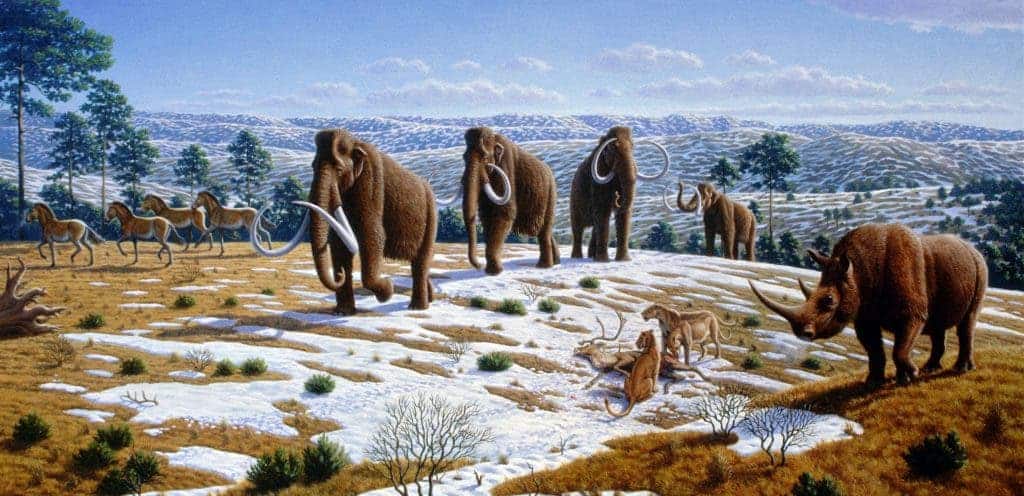
Megafauna is an umbrella term for massive ancient mammals like the sabretooth tiger, the woolly mammoth, the woolly rhino and the giant armadillo. These animals were extremely successful for hundreds of thousands of years, having survived many climate change events like ice ages. All of these animals, however, went extinct over the course of 80,000 years, with the last ones being wiped just 10,000 years ago.
Megafauna sandwich
Scientists have debated whether a lone climate event, human hunting or both had been responsible for this massive die off. Mounting evidence seems to point towards the latter.
All across the world, archaeologists have found butchered bones of the supersized mammals, like bears ten times bigger than today’s grizzlies. Some of this forensic evidence comes from Patagonia from 13,000 years or around the time humans started settling the Americas, which sort of fits the narrative that hunters wiped out the megafauna. Alan Cooper, an evolutionary biologist at the University of Adelaide in Australia, says that this is just one side of the picture. Recent developments suggest humans were in the Americas even 15,000 years ago which can only mean there were periods lasting thousands of years of equilibrium before the species were finally destroyed from the face of the Earth.
Cooper and colleagues turned to ice cores drilled from Greenland and Antartica. Trapped in the ice were telltale signs that the planet’s average temperatures jumped fast around 12,000 years ago. Patagonia warmed by as much as 2°C over 1000 years and all of the species Cooper studied went extinct during this time, as reported in Science Advances. All but one, a lone survivor called the guanaco which is a llama relative and still alive today.
Cooper’s team found a similar extinction pattern following the planet’s warming in Northern America.
Dramatic shifts in climate were common occurrences, yet the megafauna survived them. But not anymore after humans entered the picture, Cooper said. His opinion seems to be backed by a massive study undertaken last year by scientists from Exeter and Cambridge University. They ran a statistical analysis in which all the possible times megafauna species could have become extinct were scrutinized, then set against the times humans first arrived in various places. The conclusion was stark:
“As far as we are concerned, this research is the nail in the coffin of this 50-year debate — humans were the dominant cause of the extinction of megafauna,” said Lewis Bartlett, from the University of Exeter’s Centre for Ecology and Conservation, which ran the study. “What we don’t know is what it was about these early settlers that caused this demise.
“Were they killing them for food, was it early use of fire or were they driven out of their habitats? Our analysis doesn’t differentiate, but we can say that it was caused by human activity more than by climate change. It debunks the myth of early humans living in harmony with nature.”
Still many questions are left unanswered. Did humans populations rise rapidly following global warming upping demand for game? Did humans disrupt the migration of species looking for new habitats? We might one day find out, as science inches in on the truth, one question and answer at a time.






